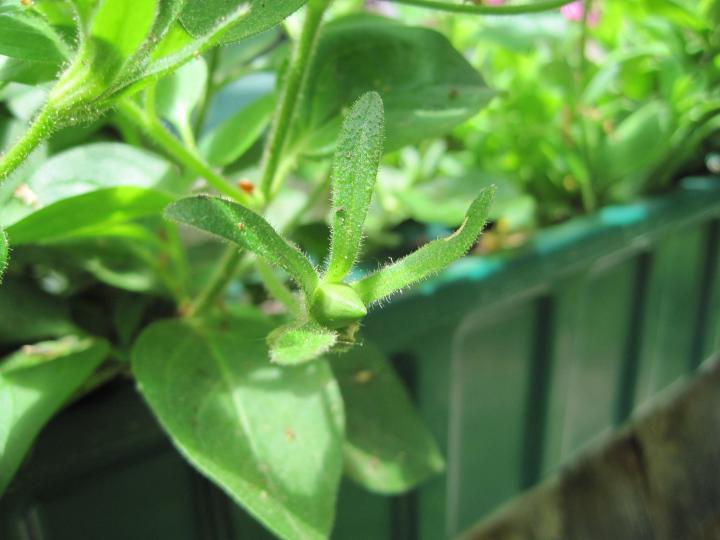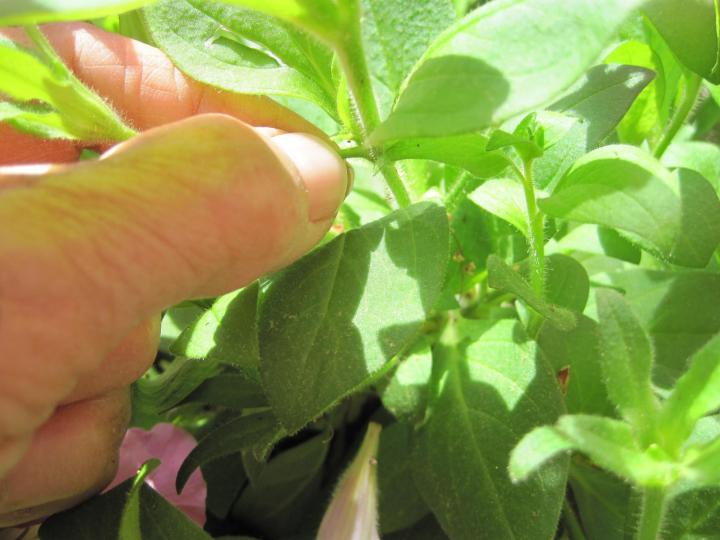Four Reasons to Deadhead
Summer is here, and with it come more flowers to enjoy. But don’t forget deadheading—the removal of spent blossoms. Regular deadheading encourages many plants to flower for longer. Here are four reasons to keep up with this chore—plus, tips on how to deadhead flowers.
1. PROLONG THE BLOOM
Removing spent flowerheads is one of the best ways to extend the show. By not allowing your flowering plants to set seeds they will keep producing more flowers. Their mission is not to provide you with beauty but to ensure the survival of their species by making seeds to produce next year’s plants. Once they have accomplished that task they shut down the bloom factory. Perennials have a well-defined season of bloom but most annuals will keep on pumping out the blossoms until seeds form. By deadheading them, all that energy needed to produce seeds will go right back into forming more flowers.

Petunias especially need to be deadheaded regularly or blossoming will slow way down.
2. CONTROL SELF-SOWERS
I don’t know about you but I have many rampant self-sowers in my garden whose goal is to take over the earth. To keep them under control I have to be diligent about removing their spent flowers before they can disperse their seeds. Keep an eye on these self-seeders:
columbine
mallow
violets
phlox
clustered bellflower
evening primrose
foxglove
Often I will let a few form seeds at the end of their season of bloom and scatter the seeds in places where I’d like them to grow.
3. ENCOURAGE REBLOOMING
Quite a few perennials will reward you with a second flush of flowers later in the season if you remove the spent spring or early summer blossoms. Here are some of the ones that may produce a second round of flower stalks in late summer:
delphinium
columbine
cardinal flower
tiarella
foxglove
centranthus
hollyhocks
Leave the foliage, just cut the old flowering stalks to the ground, give the plants a boost by sidedressing with compost or organic fertilizer, and see what happens. You just might get a second crop of flowers.
4. TIDY UP
Keep your garden looking at its best by removing faded flowers before they wither and turn brown. Some flowers are sold as “self-cleaning” meaning they will push off their dead blossoms without your help. You still might want to check and see if they have left a seedpod behind.Don’t worry about deadheading impatiens, vinca, or sedums. Even if they form seeds it does not impair their ability to keep blooming.
Narrow leaf or creeping zinnias don’t need to be deadheaded but doing so will encourage new blooms to form faster.I try to remove the spent blossoms on my big rhodies just to give a cleaner look to the shrub and to make way for the new growth that forms at the base of the old flowers. It is not imperative to do so. The new growth will form, masking the dead flowers which eventually dry up and fall off. The plants are now so tall I would need a ladder to reach the uppermost branches!
HOW-TO DEADHEAD
Pinch or cut off all of the old blossom—not just the petals—before it can set seeds. Try not to leave stumps.

Cut back to the next joint, side bud, or side stem on the stalk where new blooms will form.
Leave as much foliage as you can to feed the plant. If you have multiple flowers on a single stalk, like hollyhocks or foxglove, carefully remove each spent blossom from the bottom up while allowing the top buds to develop and bloom. When the stalk is finally spent cut it off at the base. On some plants such as dianthus, baby’s breath, spirea, and thread-leaf coreopsis it is hard to remove single blossoms as they fade. I wait until they are done blooming and take the hedge clippers to them, shearing off as many of the dead blossoms as possible. Not very accurate but it is quick and efficient. I try to remove the old lilac flowers that I can reach. They also form new growth at the base of the old flowers.
Whether you perform this task weekly or every time you pass by a plant, it doesn’t take long to either snap or snip off spent blossoms. I try to carry a small pair of clippers with me but often forget and rather than trudge back to the house to get them I just use my fingers. If a cleaner, more accurate cut is needed, I’ll wait until I am better prepared.
As fall approaches, I start to leave the seed heads for the birds to enjoy.
Article sourced from Farmer's Almanac

